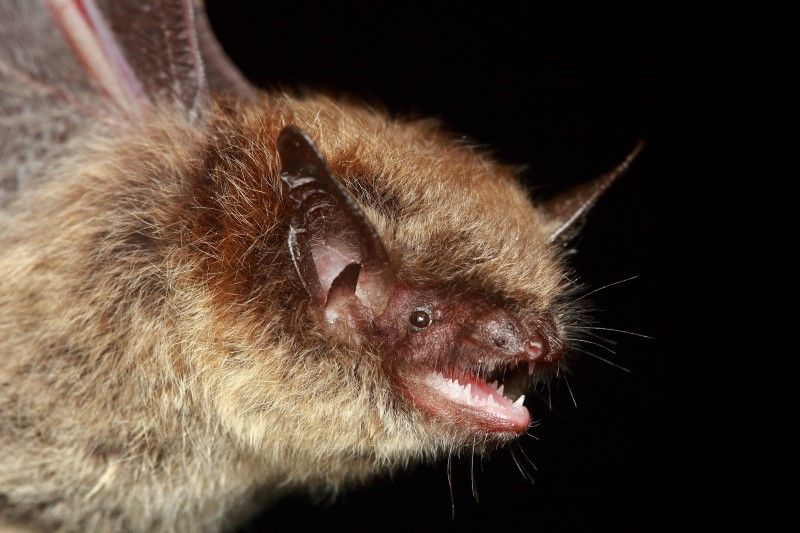Whiskered, Brandt’s and Alcathoe bats

Status
Native and localised
Population
Unknown
Scientific name
Myotis mystacinus, Myotis brandtii and Myotis alcathoe
These three bats were identified as separate species only recently, so similar are their appearance and behaviour. Brandt’s bat was recognised as distinct from the whiskered bat in 1970, and the Alcathoe bat (described for the first time in 2001) was recognised as resident in Britain in 2010. They are smallish bats and fast, skilful fliers, emerging within half an hour of sunset to feed on insects in the air up to 20m above the ground. Their shaggy fur is dark grey or brown, appearing golden on their backs. Brandt’s bat is slightly larger than the whiskered bat and is thought to be less common and widespread.
Wingspan: 21 – 24cm
Weight: 4 – 8g (whiskered); 4.5 – 9.5g (Brandt’s)
Lifespan: Up to 24 years (whiskered); 20 years (Brandt’s)
Reproduction
Mating usually takes place in autumn but can occur later in the year. A single pup is typically born in June or early July and reared alongside other infants in a maternity roost. Pups can fly by the time they are three weeks old and are independent of their mothers by six weeks.
Diet
Moths, other small insects, and spiders. Whiskered bats have more flexible foraging habits than Brandt’s bats.
Summer roosts
Houses, barns, churches and they are sometimes found in trees and will use bat boxes.
Winter roosts
Caves, mines and tunnels. Whiskered bats prefer colder areas close to the entrance. Brandt’s bats often lodge themselves in tight crevices.
Habitat
Hedgerows and woodland edges, often near water, gardens and villages. Brandt’s bat is more often in woodland than the whiskered bat.
Predators
Domestic cats and dogs; shrews or mice have been reported to feed on hibernating bats.
Threats
Habitat loss (suitable foraging areas and trees for roosting) and pesticide use
Ultrasound
Whiskered and Brandt’s bats echolocate between 32 and 89kHz, sounding loudest at 45kHz. On a bat detector, the calls sound like a series of clicks, but are quiet and can be difficult to detect. They can be confused with pipistrelles or Natterer’s bats.
Status and conservation
GB Red List: Data Deficient (DD).
Population size and distribution
UK population unknown. They are widely distributed in England and Wales; whiskered bats are also found throughout Ireland and in southern Scotland. Brandt’s bat has only recently been recorded in Ireland.
Did you know?
Whiskered and Brandt’s bats can be told apart most reliably by differences in their teeth and in the shape of their penis. The shape of the tragus, a small lobe on the lower rim of the outer ear, in front of the opening, and the length of their claws are thought to differ too.
